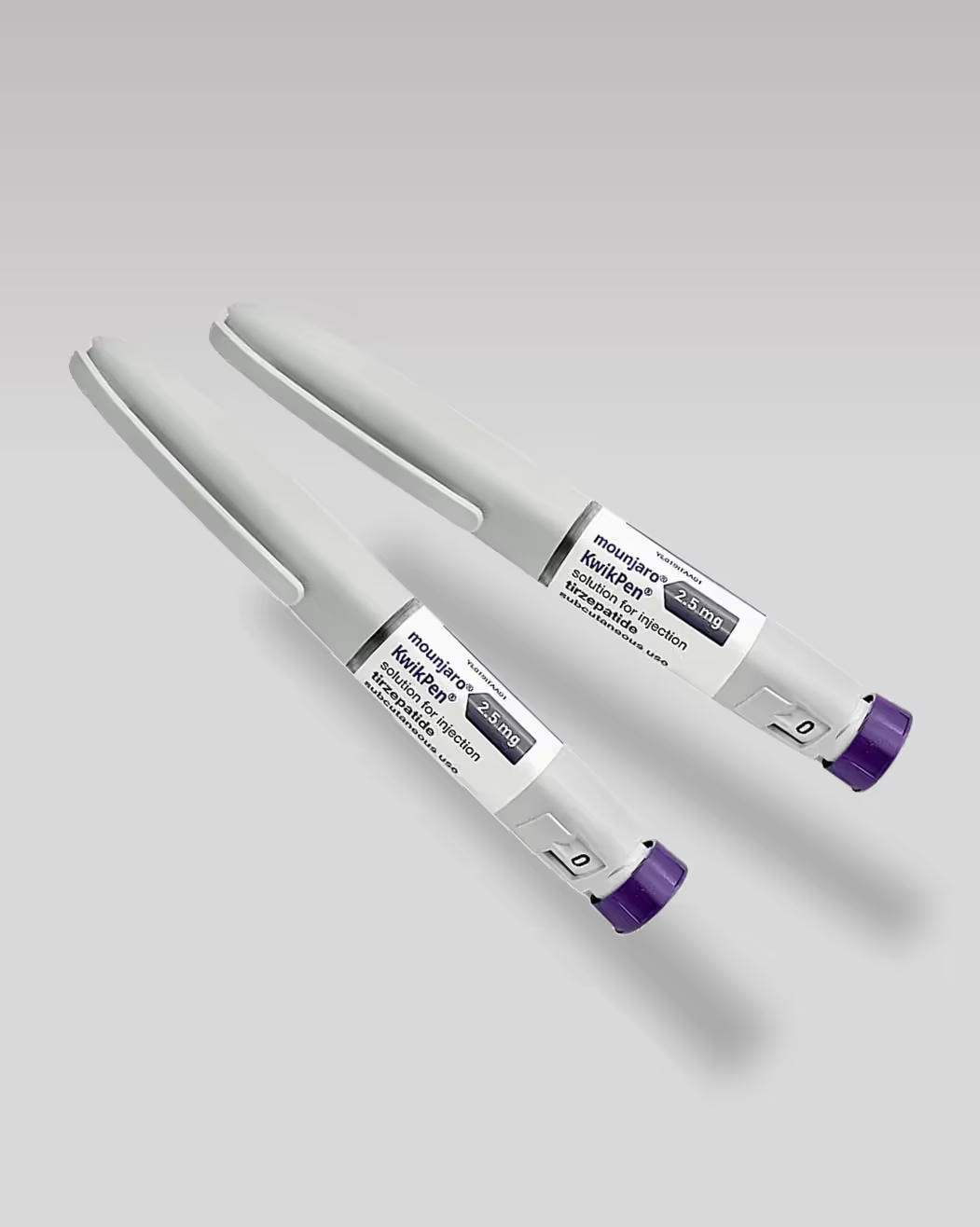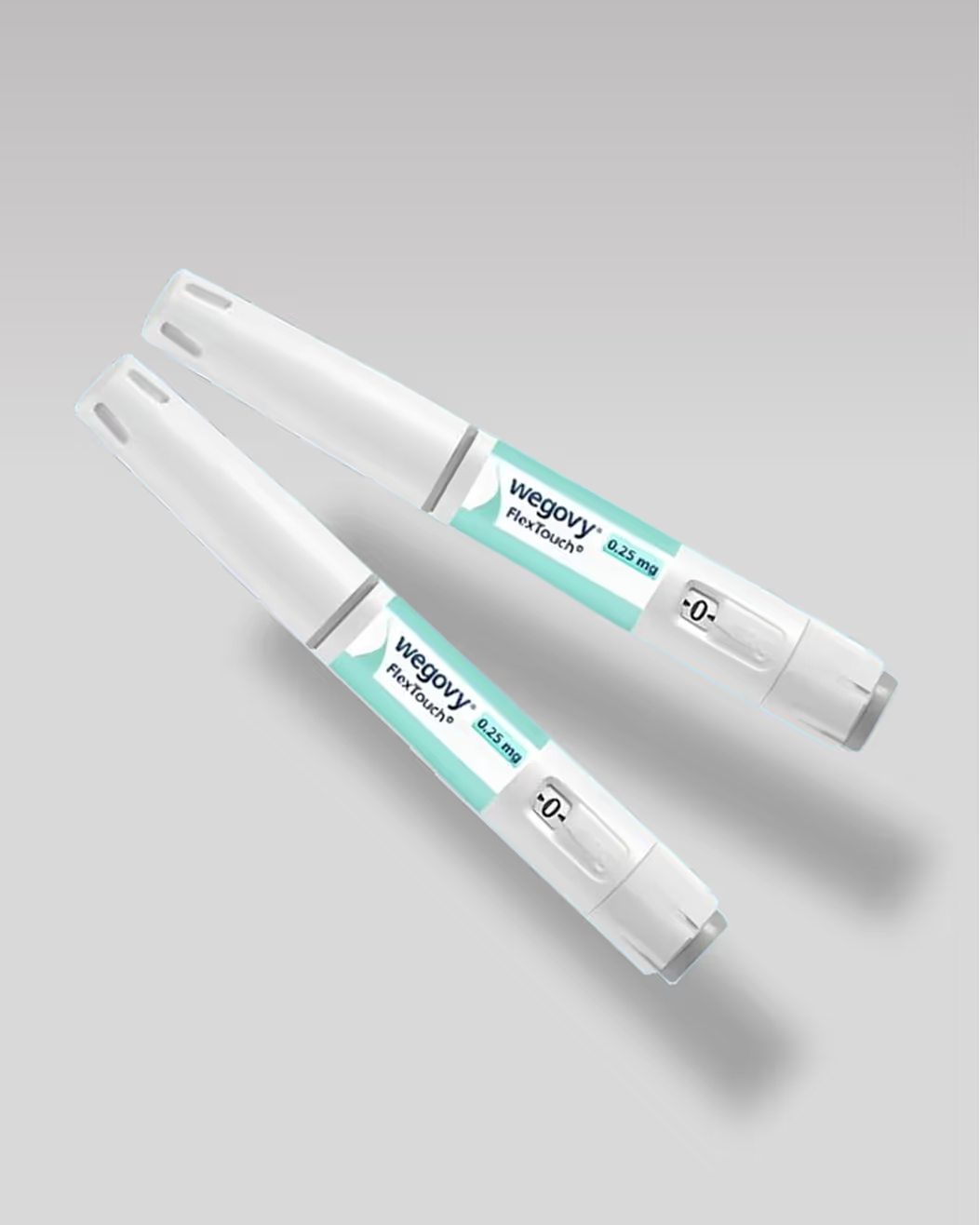
Wegovy and levothyroxine are two commonly prescribed medications in the UK that may be used together in patients managing both hypothyroidism and obesity. Wegovy (semaglutide 2.4 mg) is a GLP-1 receptor agonist licensed for chronic weight management, whilst levothyroxine is the first-line treatment for underactive thyroid. Many patients with treated hypothyroidism also meet criteria for weight management therapy, raising important questions about safety, interactions, and monitoring when combining these medicines. Understanding how Wegovy's effects on gastric emptying and weight loss may influence thyroid hormone absorption and requirements is essential for safe, effective treatment. This article provides evidence-based guidance for patients and clinicians on concurrent use.
Quick Answer: Wegovy and levothyroxine can generally be taken together safely, though Wegovy's effect on gastric emptying may influence levothyroxine absorption and thyroid hormone requirements during weight loss.
Wegovy (semaglutide 2.4 mg) is a glucagon-like peptide-1 (GLP-1) receptor agonist licensed by the MHRA for chronic weight management in adults with obesity (BMI ≥30 kg/m²) or overweight (BMI ≥27 kg/m²) with at least one weight-related comorbidity. It works by mimicking the action of the naturally occurring hormone GLP-1, which regulates appetite and food intake. Semaglutide slows gastric emptying, enhances satiety, and reduces hunger signals in the hypothalamus, leading to reduced caloric intake and sustained weight loss. Wegovy is administered once weekly via subcutaneous injection and is intended as an adjunct to a reduced-calorie diet and increased physical activity. It should be noted that NHS supply of Wegovy is currently subject to availability restrictions.
Levothyroxine is a synthetic form of thyroxine (T4), the primary thyroid hormone. It is the first-line treatment for hypothyroidism, a condition characterised by insufficient thyroid hormone production. Levothyroxine replaces or supplements endogenous thyroid hormone, restoring normal metabolic function. The medication is typically taken once daily on an empty stomach, ideally 30–60 minutes before breakfast, to optimise absorption. Dosing is individualised based on thyroid function tests (TSH, free T4) and clinical response. Levothyroxine has a narrow therapeutic index, meaning small changes in dose or absorption can significantly affect thyroid hormone levels.
Both medications are commonly prescribed in the UK, and patients with hypothyroidism may also have obesity or weight-related comorbidities. Understanding how these two medicines work—and whether they can be safely combined—is essential for effective, patient-centred care.

Mounjaro® is the most innovative GLP-1 medication proven to dramatically curb appetite, hunger, and cravings to help professional men achieve substantial weight loss.
Start Here
Wegovy® is a weekly injectable GLP-1 medication with proven effectiveness in reducing appetite, hunger, and cravings to help busy professionals lose significant weight.
Start HereYes, Wegovy and levothyroxine can generally be taken together, and there is no official contraindication to their concurrent use. Many patients with treated hypothyroidism who meet the criteria for weight management therapy may be prescribed both medications. However, it is important to recognise that while no direct pharmacological interaction has been established between semaglutide and levothyroxine, certain physiological effects of Wegovy may influence levothyroxine absorption and thyroid function monitoring.
The primary concern relates to gastric emptying. Semaglutide may delay gastric emptying as part of its mechanism to promote satiety. Because levothyroxine is absorbed primarily in the small intestine, and optimal absorption depends on an empty stomach and timely transit through the gastrointestinal tract, any delay in gastric emptying could theoretically affect levothyroxine bioavailability. In practice, this means that some patients may experience altered thyroid hormone levels after starting Wegovy, potentially necessitating closer monitoring.
Additionally, weight loss itself can influence thyroid hormone requirements. As body weight decreases, the metabolic demand for thyroid hormone may change, and some patients may require a reduction in their levothyroxine dose. Conversely, improved metabolic health and reduced adiposity may enhance peripheral conversion of T4 to the active hormone T3.
Patients should always inform their GP or endocrinologist if they are starting Wegovy while on levothyroxine, and vice versa. Close collaboration between prescribers ensures that thyroid function is monitored appropriately and that both medications are optimised for safety and efficacy.

While there is no direct drug-drug interaction between Wegovy and levothyroxine at the receptor or enzyme level, several indirect clinical considerations warrant attention. The most significant relates to altered gastrointestinal motility. Semaglutide's effect on gastric emptying may reduce the rate—and potentially the extent—of levothyroxine absorption, particularly if levothyroxine is taken shortly after a meal or if gastric emptying is markedly delayed. This could lead to subtherapeutic thyroid hormone levels, manifesting as fatigue, weight gain (counteracting Wegovy's intended effect), cold intolerance, or other hypothyroid symptoms.
Another consideration is the impact of weight loss on thyroid hormone metabolism. Significant weight reduction can alter the volume of distribution and clearance of levothyroxine. Some patients may become biochemically hyperthyroid (suppressed TSH, elevated free T4) if their levothyroxine dose is not adjusted downward in response to weight loss. Symptoms of overtreatment include palpitations, anxiety, tremor, and insomnia.
Gastrointestinal side effects are common with Wegovy, particularly during dose escalation. Nausea, vomiting, diarrhoea, and constipation may further complicate levothyroxine absorption and adherence. Patients experiencing persistent vomiting or diarrhoea should seek medical advice, as these symptoms may necessitate temporary dose adjustments or additional monitoring.
There is no confirmed causal link between semaglutide and thyroid dysfunction in humans, although GLP-1 receptor agonists have been associated with C-cell tumours (medullary thyroid carcinoma) in rodent studies. Wegovy is contraindicated in patients with a personal or family history of medullary thyroid carcinoma or multiple endocrine neoplasia syndrome type 2 (MEN 2). Routine thyroid function monitoring in patients on levothyroxine provides an additional safety net, but there is no requirement for specific thyroid cancer screening in patients without risk factors.
Patients should report any suspected side effects to their healthcare professional or directly to the MHRA via the Yellow Card Scheme.
Levothyroxine should be taken consistently at the same time each day, ideally 30–60 minutes before breakfast on an empty stomach with water only. This timing maximises absorption and minimises interference from food, calcium, iron, or other medications. Patients should avoid taking levothyroxine with coffee, as it may reduce absorption.
Wegovy is administered once weekly via subcutaneous injection, typically in the abdomen, thigh, or upper arm. It can be given at any time of day, with or without food. The dose is gradually escalated over 16–20 weeks to the maintenance dose of 2.4 mg weekly, minimising gastrointestinal side effects.
Practical tips for patients taking both medications:
Maintain consistent levothyroxine timing: Take levothyroxine at the same time every morning, well before any food or other medications.
Separate levothyroxine from Wegovy injection: While there is no need to coordinate the timing of the weekly Wegovy injection with daily levothyroxine, maintaining a routine helps ensure adherence.
Monitor for symptoms: Be alert to signs of hypothyroidism (fatigue, weight gain, cold intolerance) or hyperthyroidism (palpitations, anxiety, tremor) and report these to your GP.
Attend regular blood tests: Thyroid function tests (TSH, free T4) should be checked approximately 6–8 weeks after starting Wegovy, and then every 3–6 months, or as advised by your clinician. There is no specific UK guideline on this schedule; clinicians may follow local policy.
Do not adjust doses independently: Any changes to levothyroxine or Wegovy should be made only under medical supervision.
Report gastrointestinal symptoms: Persistent nausea, vomiting, or diarrhoea may affect levothyroxine absorption and should be discussed with your healthcare provider.
Patients taking both Wegovy and levothyroxine require regular monitoring to ensure both medications remain effective and safe. Thyroid function tests (TSH and free T4) should be performed approximately 6–8 weeks after initiating or changing the dose of either medication, and then every 3–6 months once stable. More frequent monitoring may be needed if symptoms of thyroid dysfunction develop or if significant weight loss occurs.
Weight and metabolic parameters should also be tracked. NICE guidance (TA875) recommends assessing weight, BMI, and cardiovascular risk factors regularly in patients on weight management therapy. Blood pressure, lipid profile, and HbA1c (in patients with type 2 diabetes) should be monitored as clinically indicated.
When to contact your GP or healthcare provider:
Symptoms of hypothyroidism: Unexplained fatigue, weight gain despite adherence to Wegovy, constipation, dry skin, hair loss, or feeling unusually cold.
Symptoms of hyperthyroidism: Palpitations, rapid heartbeat, anxiety, tremor, excessive sweating, or unintentional weight loss beyond expected.
Severe gastrointestinal symptoms: Persistent nausea, vomiting, or diarrhoea lasting more than a few days, which may impair levothyroxine absorption.
Signs of pancreatitis: Severe, persistent abdominal pain radiating to the back, often accompanied by nausea and vomiting (a rare but serious side effect of GLP-1 receptor agonists).
Allergic reactions: Rash, itching, swelling, or difficulty breathing.
Emergency medical attention is required for symptoms of severe allergic reaction (anaphylaxis), severe abdominal pain suggestive of pancreatitis, or severe hyperthyroid symptoms. Patients should never stop levothyroxine abruptly without medical advice, as this can lead to symptomatic hypothyroidism. Open communication with your healthcare team ensures safe, effective management of both conditions.
Suspected adverse reactions to either medication should be reported through the MHRA Yellow Card Scheme.
Yes, Wegovy and levothyroxine can generally be taken together safely. However, you should inform your GP before starting Wegovy, as thyroid function monitoring may need to be increased to ensure levothyroxine remains effective during weight loss.
Wegovy may delay gastric emptying, which could theoretically affect levothyroxine absorption. Taking levothyroxine consistently 30–60 minutes before breakfast on an empty stomach helps minimise this risk, and regular thyroid function tests ensure your dose remains appropriate.
Thyroid function tests (TSH and free T4) should typically be performed 6–8 weeks after starting Wegovy, then every 3–6 months once stable. Your GP may recommend more frequent monitoring if you experience symptoms or significant weight loss.
All medical content on this blog is created based on reputable, evidence-based sources and reviewed regularly for accuracy and relevance. While we strive to keep content up to date with the latest research and clinical guidelines, it is intended for general informational purposes only.
DisclaimerThis content is not a substitute for professional medical advice, diagnosis, or treatment. Always consult a qualified healthcare professional with any medical questions or concerns. Use of the information is at your own risk, and we are not responsible for any consequences resulting from its use.